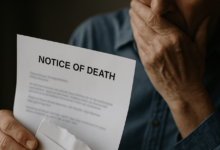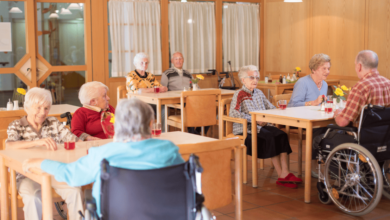The World of Pain That Is Concealed by Popular Memes
This is an opinion article, written by Emory University Professors, Calli Cook, DNP, APRN, FNP-C, and Dr. Kim Dupree Jones.
How pop culture images can convey—or conceal—patients’ lived realities (and how nurses can help to uncover the truth).
“Everything hurts and I’m dying,” joked a teenage girl with chronic pain so debilitating that it was threatening her chances of graduation. She looked up, knowing we would get the reference, waiting for us to laugh. We smiled gently, acknowledging the joke, but we knew there was more she wanted to say—more that she was living through, waiting for someone to acknowledge.
Memes (like the iconic Leslie Knope gif quoted by our patient) are popular images or video clips that are shared over and over again, often with slight variations. Memes help people relate to one another by tying immediately recognizable, often absurd, pop culture moments to the scenario at hand. They let the sender express what they’re thinking or feeling without having to explain themselves.
Often, these images are meant to be ironic or subversive—to challenge society’s expectations. But, when it comes to complex issues like chronic pain (and its intersections with gender, race, and work dynamics), nuance can be lost. Depending on context and use, memes about pain can reinforce—rather than challenge—harmful stereotypes
There is a large body of evidence to explain how this dynamic works: Countless studies show the impacts of social media on mental health; how glamorized depictions of people’s bodies can contribute to body image and eating disorders; and how the absence of groups in popular media often corresponds to their underrepresentation in other areas of society.
As nurse practitioners who specialize in complex symptoms, we see the impacts of popular culture, including memes, on people’s psyches firsthand. We understand how these seemingly innocent snapshots can shape people’s sense of self—and clinical progress.
We are clinicians and educators. People come to our practice with painful (often invisible) conditions—like migraines, pelvic pain, and fibromyalgia—when no other treatments or clinicians can help. We work with new patients, frustrated by medical bureaucracy, failed treatments, and schools and employers who don’t believe their condition is real.
Over and over again, we see that how a person looks on the outside can be very different from how they feel on the inside.
Enter the meme. For many, it’s easier to show a version of their reality instead of trying to explain it. In fact, it’s amazing just how often memes come up in serious clinical conversations. And, while many memes about pain exist, it seems that cheerful and persistent Leslie Knope, flawless Regina George, and adorably perky iCarly have become the faces of debilitating pain.
We often wonder, are these young, white, attractive, smiling, cis-gendered celebrities really a reflection of our patients’ inner worlds? Or are they more so a reflection of society’s expectations that people should keep working, smiling, and looking a certain way while enduring excruciating pain?
When they show family, friends, and clinicians these images, are patients sharing—or burying—their truths?
Sometimes the answer is, “maybe, both?”
It’s okay if the answer is complicated because our realities are complicated. There may be days where, right or wrong, patients really do feel like Leslie Knope, dressed in a nice suit and smiling through the pain.
While our patients may be expected to push through and perform in every area of their lives, we have the chance to release them from this burden, at least in the clinical space. We have a responsibility to probe deeper than the cute images and clichés. Nurses can, if nothing else, recognize and validate a more complex truth.
When society tells patients to look and behave in a way that’s inconsistent with how they feel, it can eventually affect their ability to understand and process their own symptoms. When people have a hard time describing symptoms, it can make it harder for us, as clinicians, to properly diagnose and care for them.
For many people, there’s an instinctual urge to say they’re “fine” or have “had it worse,” even when vomiting or dizzy with pain. For others, the inability to process and describe mental or physical symptoms can be so severe that it becomes its own diagnosis called alexithymia. (Alexithymia is a condition where people lose the ability to recognize and/or express certain feelings.)
When people struggle to describe their pain and associated symptoms, asking specific questions about their experience can help clinicians understand the patient’s experience. In our practice, we ask about pain being provoked by non-painful things. For instance, patients with migraine tend to have pain long after their migraine is over. Asking them about pain with brushing their hair, using a washcloth to wash their face, or wearing a hat after the episode are important questions to get the conversation started. Having symptoms like these can make patients feel unsure of themselves and their experience. When we ask questions about their pain experience, we create an empathic and safe space. In this comfortable space, patients may remember more about their pain.
When people are left behind at work and school
It’s common for employers, schools, and even healthcare providers to deny or downplay people’s experiences with pain. The meme above speaks to all the hints and accusations about “faking it” that people with chronic illnesses face. As a nurse, you can advocate for patients whose realities are denied.
Even if they “look” healthy, patients have the same rights and protections as people with visible medical conditions. If patients aren’t aware of the Americans with Disabilities Act (ADA), explain how this law can protect them at work, school, and in daily life. Namely, people with conditions that interfere with certain tasks have a right to “reasonable accommodations,” or work modifications that enable them to perform the task at hand. If your patient gets migraine headaches from bright lights, for example, they should be allowed to dim the lights in their workspace and wear sunglasses indoors, regardless of their organization’s dress code.
If their work or school does not respect your patient’s right to reasonable accommodations, a patient advocacy group for their condition [such as the Coalition for Headache and Migraine Patients (CHAMP)] may be able to help.
This meme speaks to all the ways chronic pain can make it feel impossible for patients to live a full life. Pain can make people feel exhausted, disturb their sleep, force them to miss important events, and steal their time away from loved ones. It can contribute to depression and anxiety. When pain is severe, it can be debilitating.
As clinicians, we must consider more than a scale of 1-10 when assessing people’s experiences of pain; we must consider treatments other than pills. If pain management falls within your scope of practice, help people to access natural and holistic approaches to care—especially if they have exhausted all appropriate pharmaceutical options.
A holistic care plan is one that—in addition to medically necessary drugs and procedures—might include nutrition support, mental health care, guided movement (like physical therapy or yoga), and hands-on care (like massage or acupuncture). It is an approach that addresses the various domains of life that might be impacted by pain, beyond the clinical realm.
To learn more about whole-person care, visit the National Institutes of Health Center for Complimentary and Integrative Health. The NIH National Cancer Institute also offers information on a variety of complementary and alternative therapy types.
Continue the conversation
Millions of people across every demographic experience pain—but you wouldn’t always know that by looking at popular depictions, which tend to only show the experiences of young white women. According to one 2023 study, people who are Indigenous have higher rates of chronic pain compared to other racial and ethnic groups; and people who are Black experience higher levels of pain—and less pain support—compared to other groups.
The reasons for these disparities are complex; people’s reporting of pain and ability to access help are influenced by many factors including cultural beliefs surrounding pain, clinicians’ biases, systemic racism, and the availability of community support (to name some).
Thus, while popular memes can help us to express the absurdity of societal expectations, they don’t tell the whole story—and they leave a lot of people out.
Because we all have the power to choose and share memes in everyday conversations, these images can shift cultural attitudes in real time. The next time you receive a meme that speaks to a person’s experience being repressed or denied, think about all the complexity that may be hiding beneath it—and ask if there’s anything you can do to help. Sometimes simply opening the conversation for people to share more can mean so much and make a positive impact in someone’s life.
If you are using these memes, of course, do what feels true and authentic to your experience. Just know that the conversation doesn’t have to end there. There are other people living with pain, clinicians who specialize in pain, and pain advocacy groups who are ready to listen and offer support.







